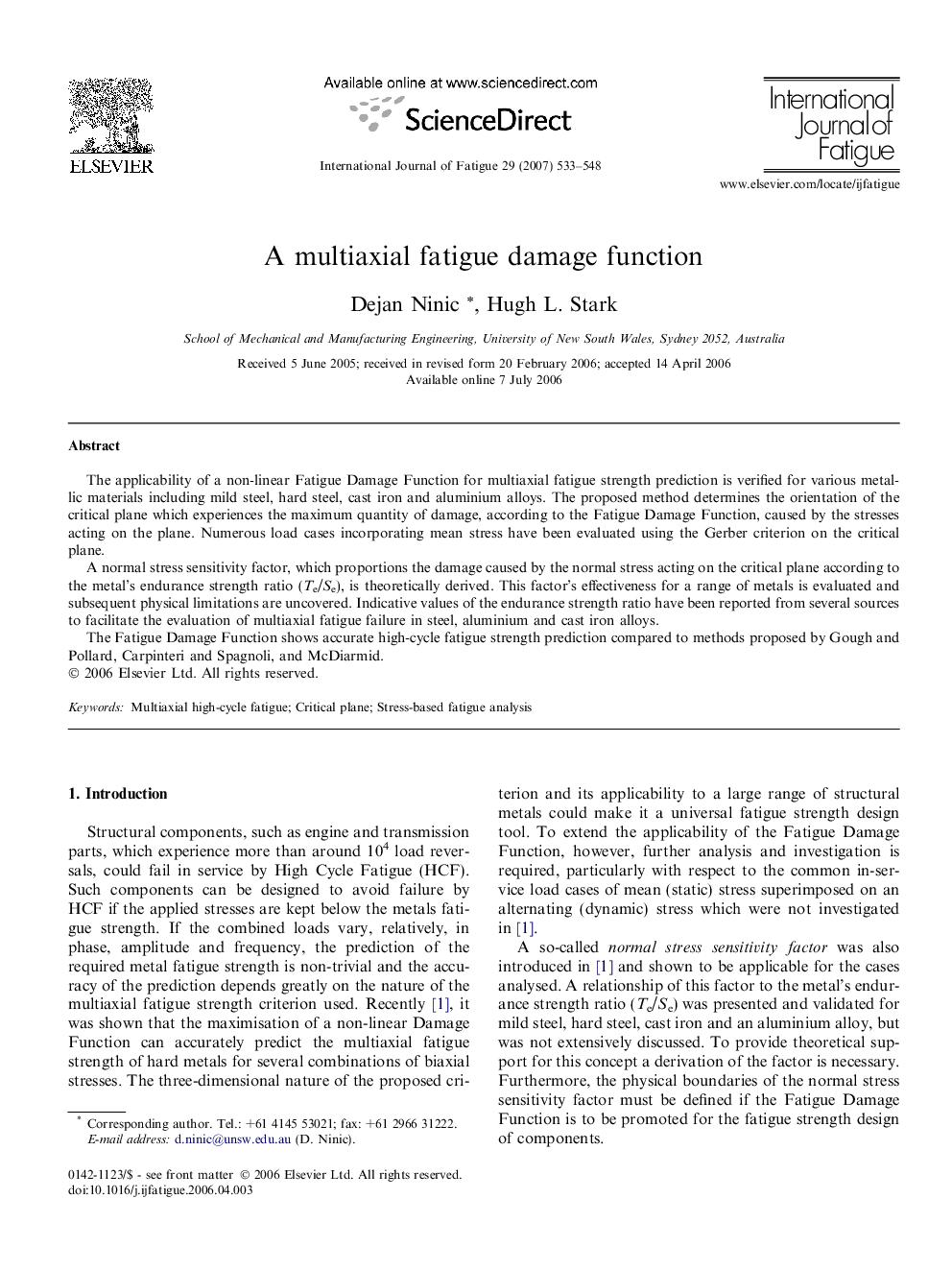| Article ID | Journal | Published Year | Pages | File Type |
|---|---|---|---|---|
| 777368 | International Journal of Fatigue | 2007 | 16 Pages |
The applicability of a non-linear Fatigue Damage Function for multiaxial fatigue strength prediction is verified for various metallic materials including mild steel, hard steel, cast iron and aluminium alloys. The proposed method determines the orientation of the critical plane which experiences the maximum quantity of damage, according to the Fatigue Damage Function, caused by the stresses acting on the plane. Numerous load cases incorporating mean stress have been evaluated using the Gerber criterion on the critical plane.A normal stress sensitivity factor, which proportions the damage caused by the normal stress acting on the critical plane according to the metal’s endurance strength ratio (Te/Se), is theoretically derived. This factor’s effectiveness for a range of metals is evaluated and subsequent physical limitations are uncovered. Indicative values of the endurance strength ratio have been reported from several sources to facilitate the evaluation of multiaxial fatigue failure in steel, aluminium and cast iron alloys.The Fatigue Damage Function shows accurate high-cycle fatigue strength prediction compared to methods proposed by Gough and Pollard, Carpinteri and Spagnoli, and McDiarmid.
